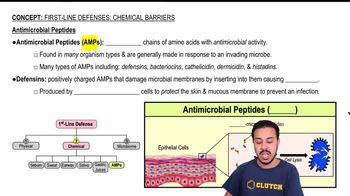Which of the following shows a correct chronological order of events in inflammation?
a. Neutrophil recruitment, macrophage recruitment, vascular changes, resolution
b. Vascular changes, resolution, neutrophil recruitment, macrophage recruitment
c. Vascular changes, macrophage recruitment, neutrophil recruitment, resolution
d. Vascular changes, macrophage recruitment, resolution, neutrophil recruitment
e. Vascular changes, neutrophil recruitment, macrophage recruitment, resolution



